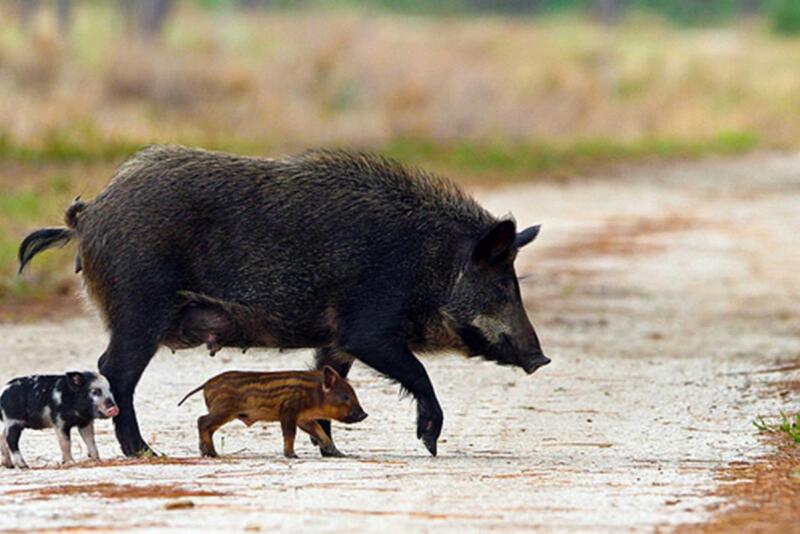Two states are working to ramp up measures to minimize growing wild pig populations that are causing major damage to agriculture, the environment and private property.
California Senator Introduces Legislation to Lift Hunting Restrictions
California Sen. Bill Dodd, D-Napa, recently introduced legislation that could help control California’s growing pig problem. It’s wild pig population has soared since various non-native boar and pig breeds were introduced centuries ago. Wild pigs can be found in 56 of the 58 counties.
“Unfortunately, swelling numbers of wild pigs have become a scourge on California wildlands, endangering sensitive habitats, farms and other animals,” Sen. Dodd said in a release. “They also present a major public health risk and have been linked to outbreaks of foodborne illness. My bill will increase opportunities to hunt them and do so more economically so that we may bring our pig population under control.”
Numerous environmental and public health problems are associated with pigs and the California Department of Fish and Wildlife allows year-round pig hunting. Sen. Dodd’s proposal, Senate Bill 856, would lift remaining hunting restrictions allowing for better population control and habitat management. His bill has garnered the support of many wildlife officials and farmers, among other groups, the release said.
“The feral pig population in Sonoma County has gotten to an alarming number,” Jennifer Beretta, president of Sonoma County Farm Bureau, said in the release. “These unmanageable herds are tearing up working lands, competing with less aggressive wildlife for food, and rutting the landscape to the point of degraded water quality. We would never advocate for eradicating an animal population, but the ability to manage the population through science-based management practices is advantageous for farming and open space.”
Two Texas Counties Put Bounties on Feral Hogs
Meanwhile, two counties in Central Texas are putting bounties on feral hogs this year, Outdoor Life reports. Starting in February, hunters in Hays and Caldwell Counties will be able to get paid $5 per wild pig killed.
The funding has been made possible from grants from Texas A&M AgriLife Extension’s Wildlife Services, the article said. Hays County received $7,500 and Caldwell received $20,000.
The bounties will be paid by check in return for tails and/or certified buying station receipts. Hays County is also requiring participants to complete a W-9 and a participation form. These forms can be obtained in-person at one of the Hays County bounty stations, or through the Central Texas Feral Hog Task Force’s website.
Programs like these are becoming critical as the wild pig population in Texas continues to increase at an alarming rate. Wild pigs are present in 253 of the state’s 254 counties. The rapid expansion has been attributed to the pigs’ ability to thrive across various environments.
Experts note that the only problem with these bounty programs is that recreational hunting alone is not enough to fix the problem. Texas already allows hunters to target pigs year round, Outdoor Life reports, and there is no bag limit for this species.
Trapping is more effective, which is also why Hays and Caldwell counties are making trapping a large component of their wild pig management plan.
Read More:
Monster-Sized Wild Pigs are on the Rise in Canada
Can You Really Trap Feral Pigs with Your Cell Phone?
Feral Swine: USDA Monitors World’s Worst Invasive Alien Species
How Colorado Eliminated Feral Hogs
Feral Hog Stomachs Tell Story of Destruction














